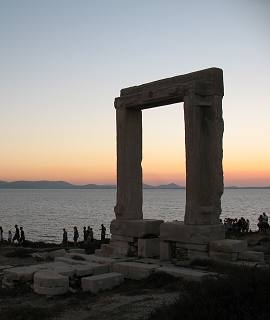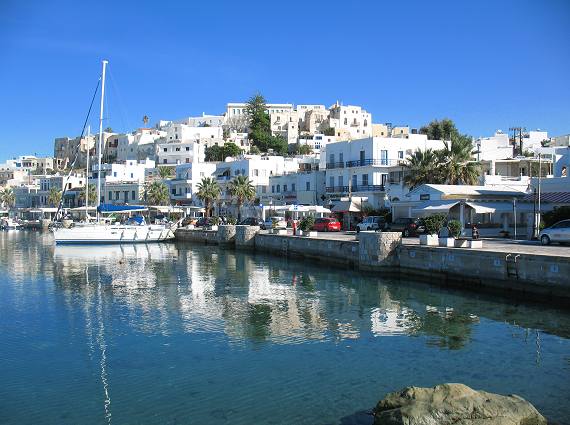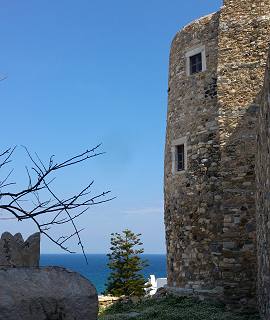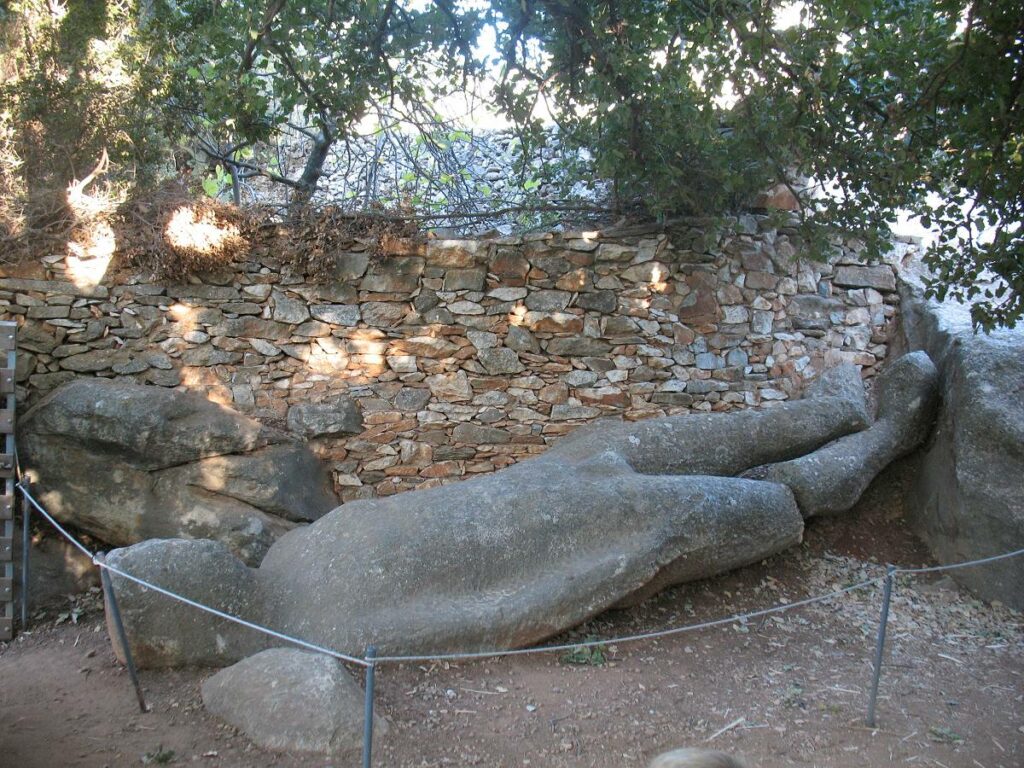Naxos Island
A spot of white in the turquoise waters of the Aegean Sea, the island of Naxos is a unique blend of ancient ruins and beach culture. The largest of the Cycladic Islands, Naxos is the childhood home of none other than Zeus, king of the gods. Upon arrival in Naxos, hike over a causeway to Palatia, where the Portara, a stone gateway to an ancient temple that no longer exists, stands alone, the symbol of the island. At sunset, the views of the island, and the sea beyond, are breathtaking.



It was on Naxos that an ungrateful Theseus is said to have abandoned Ariadne after she helped him escape the Cretan labyrinth. In keeping with even mythic soap opera, she didn’t pine long, and was soon entwined with Dionysos, the god of wine and ecstasy and the island’s favourite deity. Naxian wine has long been considered a fine antidote for a broken heart.
Naxos has a long history
The island was a cultural centre of classical Greece and of Byzantium.
Venetian and Frankish influences have left their mark.

Places to Visit
Portara, Naxos Town
When arriving to Naxos Port the first impression you get will remain always in your mind. Portara, the huge marble Gate of the Temple of Apollo which was never finished. This is the trademark attraction of the island, built in the 6th century BC. It is believed that the temple was never completed and most of its parts were taken to build other structures on the island. Don’t miss the stunning sunset.
Kouros Statue – Flerio, Melanes
The popular name for “Kouros” was Ellinas (the Greek) and has its origin in 7th century B.C. The statue is around 6,4m long and is missing his left foot and a part of his right leg. Click here to attend an interesting presentation of the archeological site Flerio and the small traditional villages next to it, Kournochori and Miloi.
Agias Tower
On the way to Apollonas you will reach Agias Tower. The spot offers a great view and offers you a journey to the way people used to live many many years ago.
